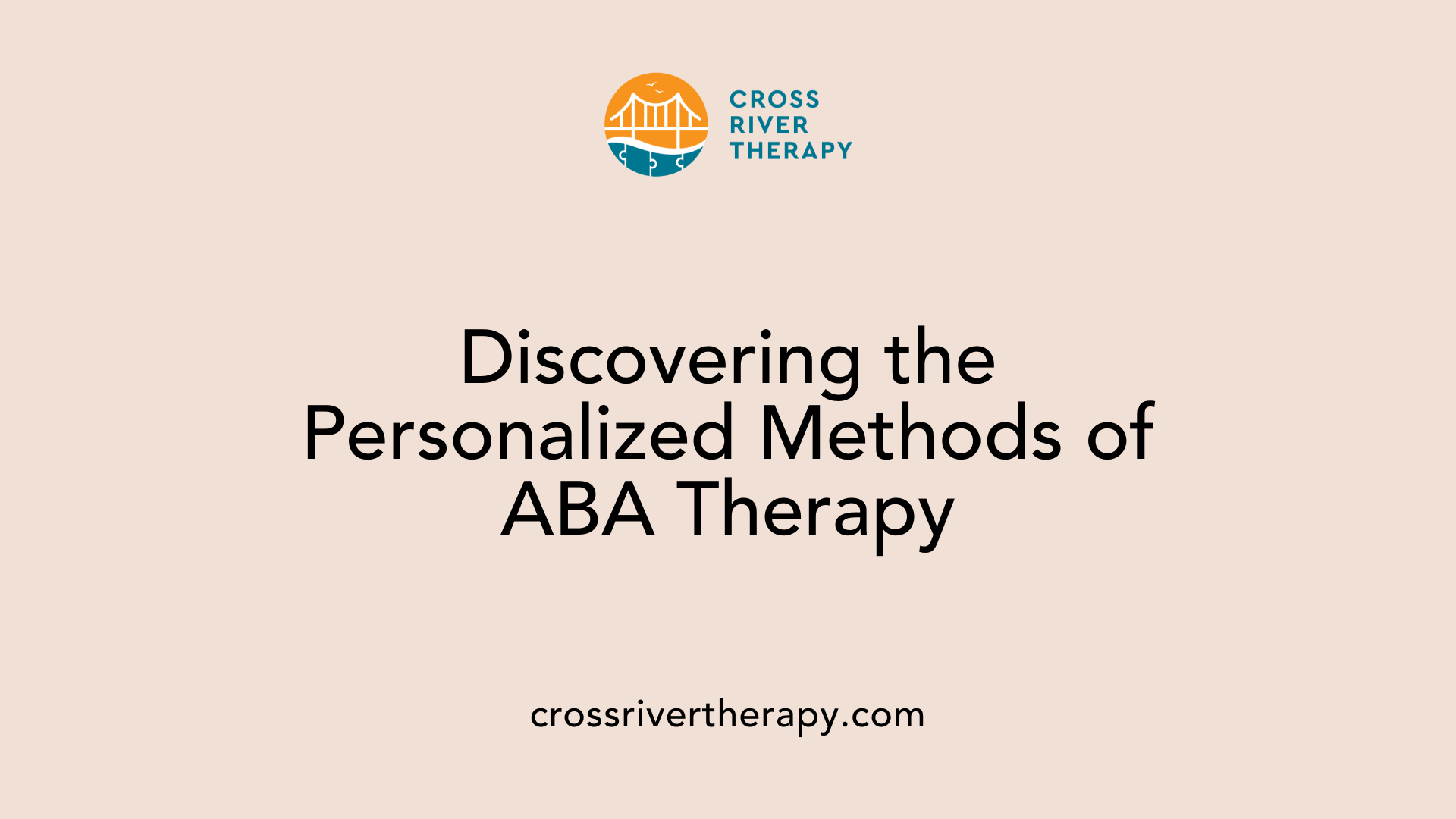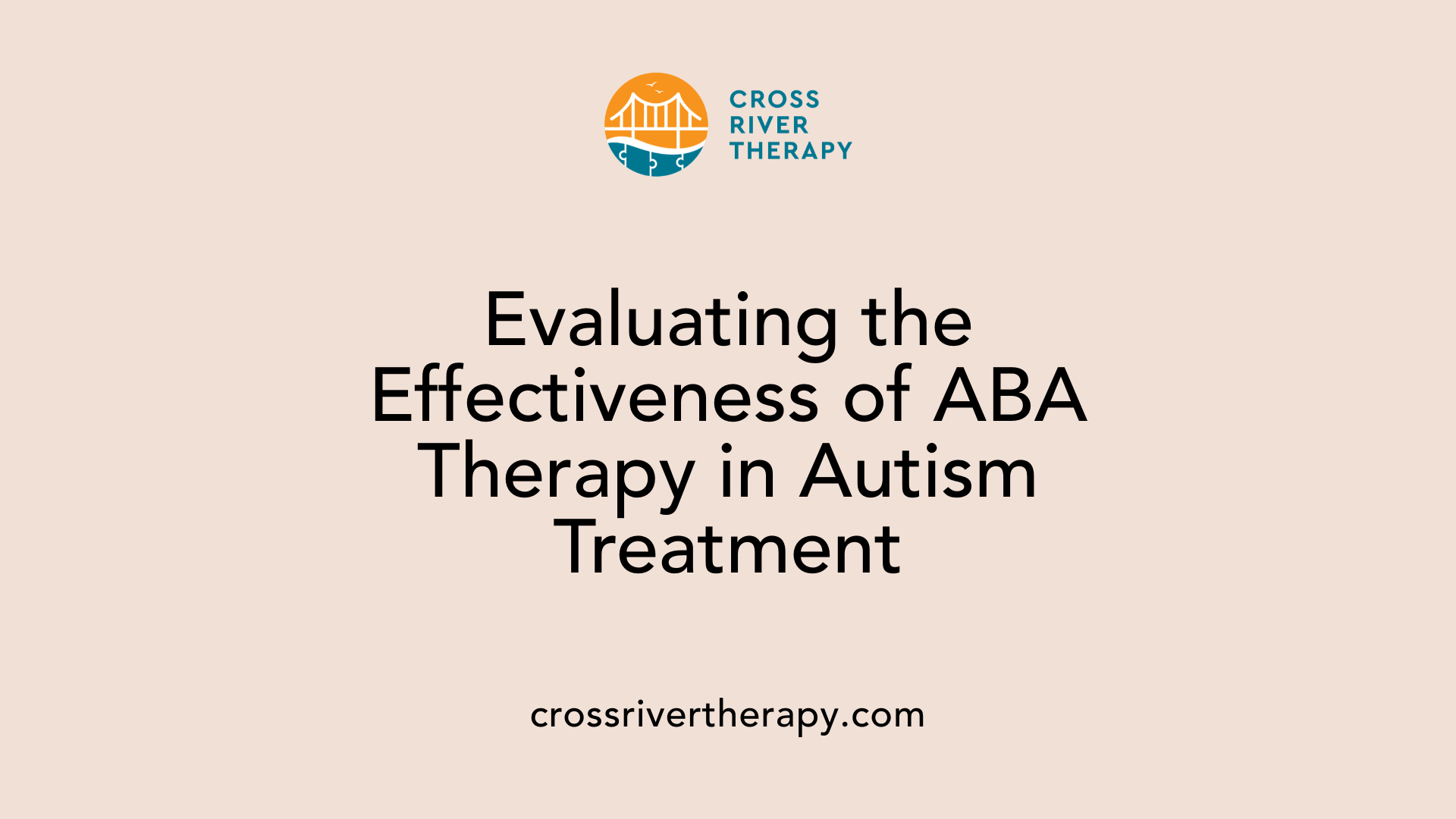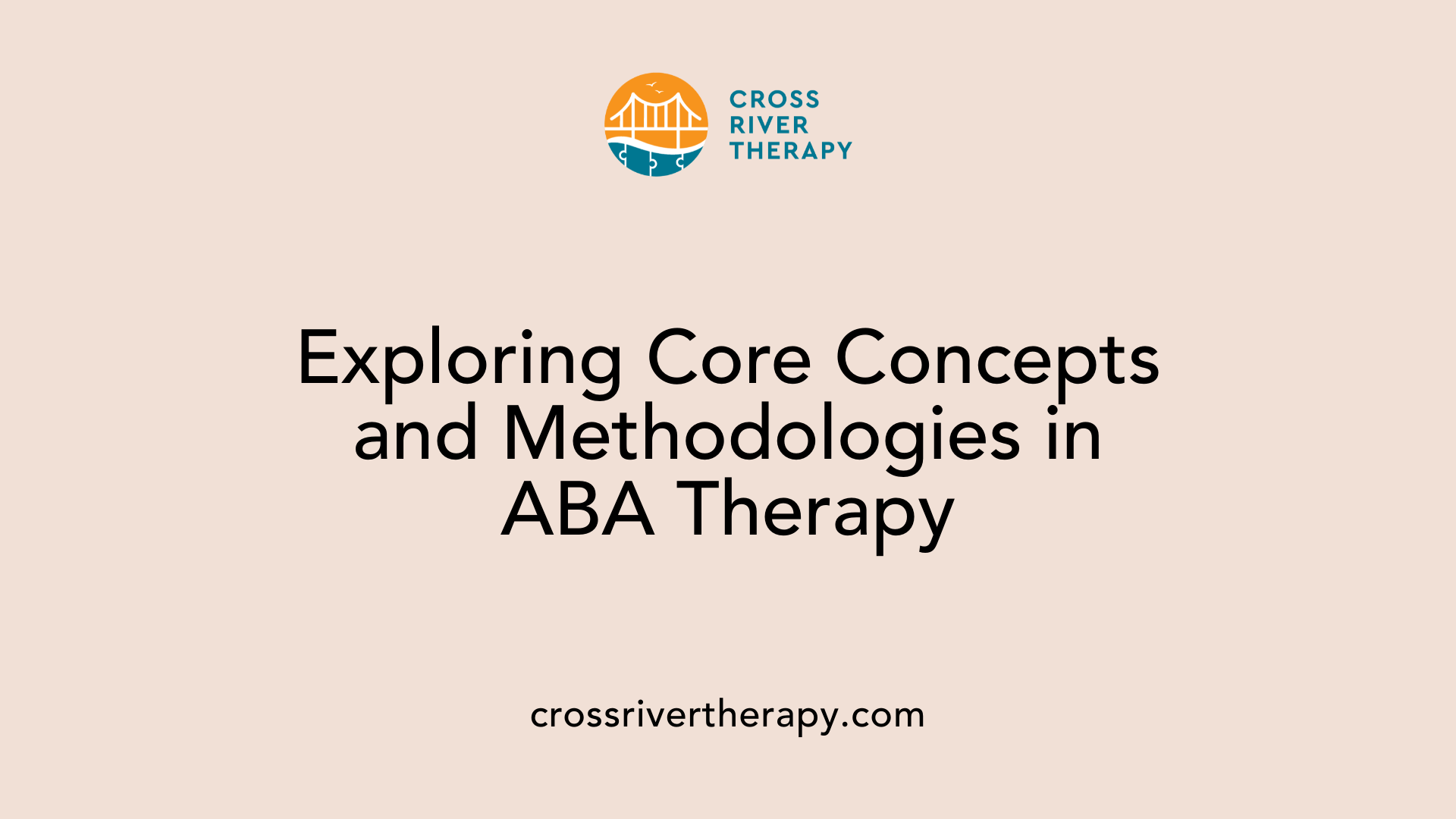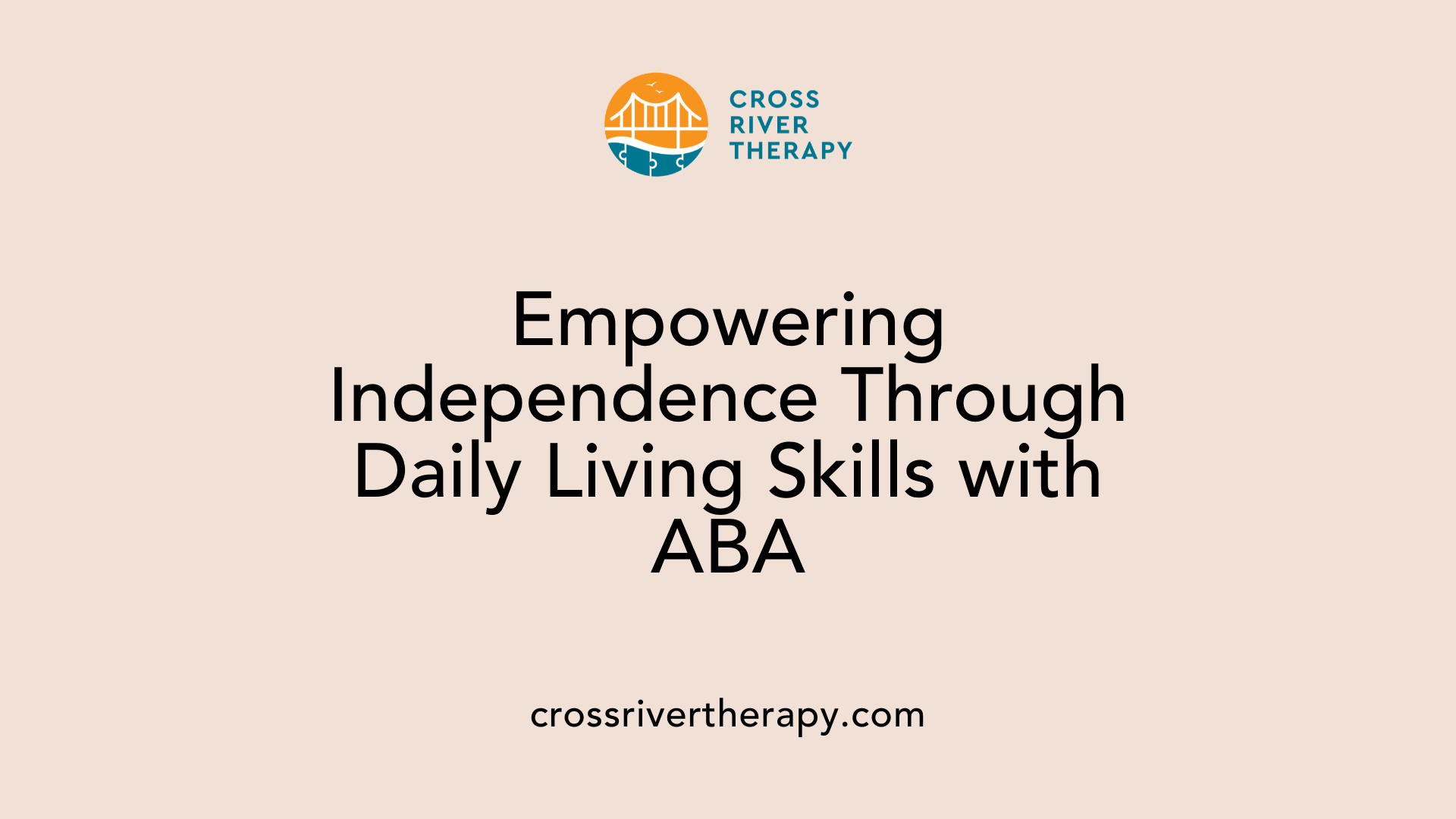How Cross River Therapy is Transforming Lives with Applied Behavior Analysis
Bridging Gaps in Autism Treatment with ABA at Cross River Therapy
Introduction to Cross River Therapy and ABA
Cross River Therapy is making significant strides in the field of behavioral therapy through its innovative application of Applied Behavior Analysis (ABA). Recognized as a valuable and scientifically-backed approach, ABA is harnessed by Cross River Therapy to bring about positive and lasting changes in individuals, especially children with autism. This article explores the methodologies, successes, and real-world applications of ABA therapy as utilized by Cross River Therapy to transform lives.
Unpacking Applied Behavior Analysis (ABA) Therapy

What is applied behavior analysis (ABA) therapy, and in what conditions is it most commonly used?
Applied Behavior Analysis (ABA) is a research-based therapy primarily utilized for treating individuals with autism and other developmental disorders. This method focuses on behavior modification, aiming to increase positive behaviors and decrease negative ones. It also emphasizes teaching new skills and enhancing social interactions, making it particularly beneficial in various settings.
ABA is built on principles from behaviorism, assessing how observable behaviors relate to environmental factors. Licensed behavior analysts start by conducting a comprehensive assessment of the child to craft an individualized treatment plan, ensuring that it caters to their unique strengths and needs. Data collection and analysis are integral, allowing therapists to monitor progress and adjust interventions accordingly.
Moreover, the therapy is effective in addressing challenging behaviors like tantrums and aggression, promoting positive alternatives and enhancing communication skills. Importantly, ABA also teaches essential daily living skills, ensuring individuals acquire independence.
Recognized as a scientifically established method, ABA is supported by the principles endorsed by the US National Research Council for effective educational and treatment interventions for autism. Its application has been widely acknowledged, making it a crucial component of autism treatment strategies that lead to improved quality of life.
The Unique Approach of ABA Therapy at Cross River

How does ABA differ from traditional behavior modification in its approach to changing behavior?
Applied Behavior Analysis (ABA) sets itself apart from traditional behavior modification methods through its emphasis on personalized, data-driven strategies. Rather than relying on one-size-fits-all techniques, ABA begins with a comprehensive assessment performed by licensed behavior analysts. This assessment focuses on understanding the specific behaviors of a child with autism and the functions those behaviors serve within their environment.
Through this individualized process, ABA practitioners develop tailored interventions aimed at enhancing socially significant skills, such as communication and self-help. For example, while traditional methods might utilize generalized procedures, ABA's meticulous approach ensures that interventions are refined based on continual data collection and analysis. This allows for real-time adjustments to the therapy, ensuring that the child’s unique needs are consistently met and that they experience genuine improvements in their everyday life.
Moreover, ABA therapy emphasizes the involvement of family members and educators throughout the process. This collaboration fosters consistency in the application of skills across different settings, making learning a more integrated experience. As a result, ABA not only targets behavior change but also promotes skill acquisition in a way that significantly enhances the quality of life for individuals with autism.
Measuring Success: The Impact of ABA on Children with Autism

What is the effectiveness of ABA therapy in children with autism spectrum disorder?
The effectiveness of Applied Behavior Analysis (ABA) therapy in children with autism spectrum disorder (ASD) is well-documented. Various studies indicate that ABA is a robust intervention method for enhancing critical skills in children with autism.
A recent study conducted in Wuhan highlighted the significant benefits associated with structured ABA interventions. This research involved 100 boys aged 4 to 11 and revealed considerable improvements in social and communicative skills. The outcomes were measured using the Kindergarten Inventory of Social/Emotional Tendencies (KIST), achieving high statistical significance (p < .05).
What are the outcomes of ABA therapy?
The positive outcomes of ABA therapy extend beyond just communication skills. Key benefits include:
- Emotional Regulation: Many children demonstrate enhanced emotional control, allowing for better responses to social situations.
- Daily Living Skills: ABA fosters independence by teaching essential life skills, such as dressing and feeding.
- Social Connections: Parents report increased ability in their children to make friends and engage in social interactions.
- Academic Success: Improvements in focus and task completion skills have been noted, facilitating better participation in educational settings.
Collectively, these findings support ABA therapy as an effective approach not only for improving behavioral outcomes but also for significantly enhancing the overall quality of life for children with autism. Involving family is crucial; it allows parents to reinforce these skills in everyday scenarios, ensuring long-lasting benefits.
The Core Principles and Methodology of ABA

Understanding the Principles of ABA
Applied Behavior Analysis (ABA) is founded on several essential principles aimed at teaching useful and adaptable behaviors. Its core focus is on observable actions rather than internal states. This scientific approach is deeply rooted in behaviorism, which stresses the significance of the interaction between behavior and the environment. By analyzing these relationships, ABA seeks to modify behaviors that are socially significant, helping children with autism learn essential skills for daily living.
Methodologies Employed at Cross River Therapy
At Cross River Therapy, various evidence-based techniques are applied to maximize the effectiveness of ABA. Key methodologies include:
| Methodology | Description | Application |
|---|---|---|
| Discrete Trial Training | A structured approach that breaks skills into small, manageable steps, reinforcing correct responses. | Teaching specific skills like using utensils or social greetings. |
| Naturalistic Interventions | Involves learning within natural environments and activities, focusing on real-life applicability. | Enhancing social skills during play or meal times. |
| Functional Behavioral Assessment | A process that identifies the causes of challenging behaviors to tailor interventions accordingly. | Addressing specific behavioral challenges like tantrums. |
Both parents and therapists work together in this therapeutic process, ensuring skills are reinforced throughout various aspects of a child's life, ultimately promoting independence and improving the quality of life.
Personal Stories: Testimonies of Transformation
Success Stories
Many families have witnessed remarkable transformations in their children through ABA therapy. One parent shared how their son, who once struggled with communication, began using complete sentences to express his needs and emotions. This not only improved his interactions with family and classmates but also bolstered his confidence.
Another family reported significant progress in their daughter’s social skills. After participating in structured play sessions incorporating ABA techniques, she learned how to make friends and engage in conversations, which was a huge milestone for her social development.
ABA's Impact on Daily Lives
The effects of ABA extend beyond academic and social gains. Parents have noted the positive changes in their child's independence. Daily living skills such as dressing, feeding, and managing personal hygiene became achievable goals through consistent ABA interventions. One parent recounted how their child now happily participates in meal preparation, enjoying the sense of accomplishment that comes with independence.
Additionally, families often describe a newfound peace at home as challenging behaviors like tantrums decrease substantially. Through data-driven strategies, families report a calmer environment where connections with their children flourish. ABA therapy not only enhances the lives of children with autism but also transforms entire families, fostering better relationships and happier homes.
The Role of Family in ABA Therapy
Family Involvement in ABA Therapy
Family involvement is a cornerstone of ABA therapy, playing a crucial role in the child’s development and the effectiveness of interventions. When families engage actively, they not only reinforce the skills learned during therapy sessions, but they also create a consistent environment conducive to learning. Parents can apply strategies outlined by therapists in daily routines, which helps make the skills more effective and natural in real-world situations.
Family members are encouraged to attend sessions when possible, enabling them to observe techniques in action and understand how to best support their child. This collaboration fosters stronger family bonds and enhances the overall treatment experience.
Support Systems for Children's Progress
In ABA therapy, support systems extend beyond the therapist and include the entire family unit. Regular communication between therapists and families ensures that everyone is aligned in goals and strategies. For example, families are educated on behavioral interventions, data tracking, and the significance of reinforcing positive actions at home.
Moreover, the Autism Society of America provides resources for families, facilitating informed decision-making about therapies like ABA. These resources help families grasp the complexities of ABA techniques while empowering them to advocate for their child’s needs within educational and social contexts.
Engaging in community support groups also offers families connections with others navigating similar challenges, fostering a supportive network that can share insights and encouragement.
Social and Communication Skills: Cornerstones of ABA
Enhancing Communication
ABA therapy plays a significant role in helping children with autism express their emotions and needs effectively. Through targeted interventions, therapists work on improving various communication skills. This includes teaching gestures, utilizing picture exchange communication systems (PECS), and facilitating verbal expression. The goal is to enable children to articulate their thoughts and feelings, making interaction with others smoother and more meaningful.
Improving Social Interactions
In addition to communication, ABA therapy fosters the development of essential social skills. Children learn how to engage with peers, understand social cues, and respond appropriately in different situations. Techniques used in ABA promote skills such as maintaining eye contact, sharing, taking turns, and cooperating with others. This foundational work helps children navigate social environments confidently, building connections that are crucial for personal and academic success.
| Focus Area | ABA Focus | Outcomes Achieved |
|---|---|---|
| Communication Skills | Expressing emotions | Improved articulation |
| Social Skills | Engaging with peers | Enhanced social interactions |
ABA for Academic and Behavioral Development
Promotion of Academic Success
Applied Behavior Analysis (ABA) significantly enhances children's academic performance. By focusing on improving crucial skills such as attention, focus, and task completion, ABA therapy prepares children to engage effectively in educational settings. These skills are not only foundational for learning but also empower children to participate more fully in their classrooms.
ABA techniques can be personalized to meet the diverse needs of learners. For instance, a child may receive targeted interventions that help them maintain attention during lessons or complete assignments independently.
Behavioral Improvements through ABA
Beyond academic success, ABA therapy is pivotal in reducing challenging behaviors often exhibited by children with autism. By identifying the root causes of behaviors such as tantrums and aggression, therapists can teach alternative, more appropriate responses.
Family involvement plays a crucial role here, as parents and caregivers learn how to reinforce positive behaviors in everyday situations. This collaborative approach not only aids in behavior modification but also fosters a supportive environment for skill application.
Comparison of ABA Techniques
| Technique | Focus Area | Description |
|---|---|---|
| Discrete Trial Training | Skill Acquisition | Structured teaching of individual skills. |
| Naturalistic Teaching | Contextual Learning | Skills taught in natural environments. |
| Generalization Techniques | Behavior Application | Ensuring learned skills apply in varied situations. |
Through these comprehensive techniques, ABA promotes long-term improvements, nurturing both academic potential and behavioral development.
Independence and Daily Living Skills: ABA Empowerment

Teaching Independence
ABA therapy plays a vital role in fostering independence among children with autism. Through tailored interventions, therapists focus on teaching essential life skills that promote self-sufficiency. This includes skills such as personal hygiene, grocery shopping, and maintaining a household.
Daily Living Skills Through ABA
By implementing structured teaching methods, children learn how to dress, prepare meals, and manage their belongings. A critical aspect of this process is the use of task analysis, which breaks down complex tasks into manageable steps, making it easier for children to grasp each component.
Moreover, family involvement in the ABA process is pivotal. Parents and caregivers are trained to reinforce these skills in everyday scenarios, which helps solidify independence and enhances the child's ability to function autonomously in their home and community.
This emphasis on daily living skills not only boosts confidence but also aims to improve the overall quality of life for individuals with autism.
The Collaborative Effort: Involving Stakeholders in ABA
Collaboration with Educators and Caregivers
The effectiveness of Applied Behavior Analysis (ABA) therapy significantly hinges on the involvement of a broad spectrum of stakeholders. Educators play a critical role in implementing ABA techniques within classrooms, tailoring strategies to enhance learning experiences. Similarly, family members, including parents, actively reinforce techniques learned during therapy, ensuring consistent application in everyday scenarios.
Multifaceted Approach of ABA Therapy
The ABA approach is inherently collaborative, bringing together not only therapists and families but also professionals such as psychologists and occupational therapists. This teamwork fosters a comprehensive strategy that addresses the individual needs of children with autism. By focusing on observable behaviors and environmental relationships, ABA interventions can span various contexts, ensuring skills are generalized to both structured and natural environments.
The Future of ABA at Cross River Therapy
Cross River Therapy stands at the forefront of transformative treatment for autism through its comprehensive use of Applied Behavior Analysis. By focusing on evidence-based practices and holistic involvement, the therapy not only impacts individual lives but also creates a supportive community around it. As ABA continues to evolve, Cross River Therapy remains committed to crafting brighter futures for children and their families.
References
- How ABA Therapy is Transforming the Lives of Children with Autism
- What is Applied Behavior Analysis?
- Applied behavior analysis - Wikipedia
- ABA - Applied Behavior Analysis Therapy - Autism Society of Indiana
- The effectiveness of applied behavior analysis program training on ...
- The effectiveness of applied behavior analysis program ... - NCBI
- Underlying Mechanisms of Brain Aging and Neurodegenerative ...
- Topic choice contributes to the lower rate of NIH awards to African ...
- Applied behavior analysis treatment of autism: the state of the art



